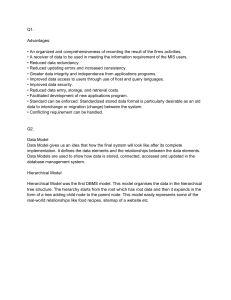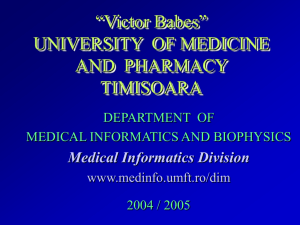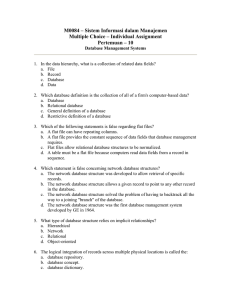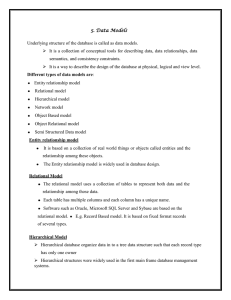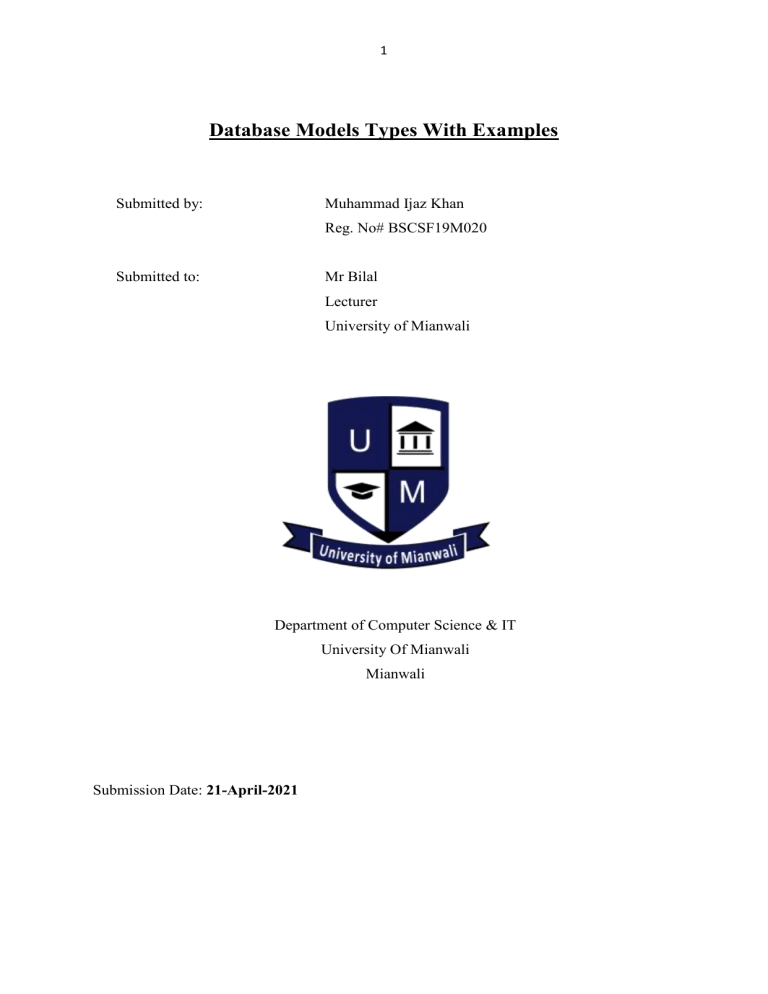
1 Database Models Types With Examples Submitted by: Muhammad Ijaz Khan Reg. No# BSCSF19M020 Submitted to: Mr Bilal Lecturer University of Mianwali Department of Computer Science & IT University Of Mianwali Mianwali Submission Date: 21-April-2021 2 Data Model Data Model gives us an idea that how the final system will look like after its complete implementation. It defines the data elements and the relationships between the data elements. Data Models are used to show how data is stored, connected, accessed and updated in the database management system. Here, we use a set of symbols and text to represent the information so that members of the organisation can communicate and understand it. Though there are many data models being used nowadays but the Relational model is the most widely used model. Apart from the Relational model, there are many other types of data models about which we will study in details in this blog. Some of the Data Models in DBMS are: 1. Hierarchical Model 2. Network Model 3. Entity-Relationship Model 4. Relational Model 5. Object-Oriented Data Model 6. Object-Relational Data Model 7. Flat Data Model 8. Semi-Structured Data Model 9. Associative Data Model 10. Context Data Model 1. Hierarchical Model Hierarchical Model was the first DBMS model. This model organises the data in the hierarchical tree structure. The hierarchy starts from the root which has root data and then it expands in the form of a tree adding child node to the parent node. This model easily represents some of the real-world relationships like food recipes, sitemap of a website etc. Example: We can represent the relationship between the shoes present on a shopping website in the following way: 3 2. Network Model This model is an extension of the hierarchical model. It was the most popular model before the relational model. This model is the same as the hierarchical model, the only difference is that a record can have more than one parent. It replaces the hierarchical tree with a graph. Example: In the example below we can see that node student has two parents i.e. CSE Department and Library. This was earlier not possible in the hierarchical model. 3. Entity-Relationship Model Entity-Relationship Model or simply ER Model is a high-level data model diagram. In this model, we represent the real-world problem in the pictorial form to make it easy for the stakeholders to understand. It is also very easy for the developers to understand the system by just looking at the ER diagram. We use the ER diagram as a visual tool to represent an ER Model. Example: Teacher works for a department. 4 4. Relational Model Relational Model is the most widely used model. In this model, the data is maintained in the form of a two-dimensional table. All the information is stored in the form of row and columns. The basic structure of a relational model is tables. So, the tables are also called relations in the relational model. Example: In this example, we have an Employee table. 5. Object-Oriented Data Model The real-world problems are more closely represented through the object-oriented data model. In this model, both the data and relationship are present in a single structure known as an object. We can store audio, video, images, etc in the database which was not possible in the relational model(although you can store audio and video in relational database, it is adviced not to store in the relational database). In this model, two are more objects are connected through links. We use this link to relate one object to other objects. Example: This can be understood by the example given below.

